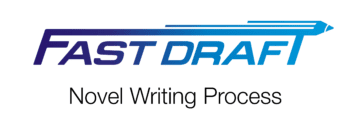
Module 6: Scene Blueprint
Lesson 7 (of 7) – Feedback

COULD ALL OF THIS BE BETTER INSIDE A WORKBOOK?
Read and complete the entire Fast Draft Process as a: Digital Playbook (editable workbook PDF) or Print Playbook (Paperback workbook)
Worksheet Action Step(s):
Action Step #1 – Your scene feedback:
Simplify and summarize your scenes inside your Scene Outline, and then access your Feedback Loop
It It’s time for you to gather one last round of feedback before you start drafting your story.
Of course, you must access your Feedback Loop to accomplish this. However, looking at individual scenes takes much more time and attention than looking at story ideas. So you must best position your Scene Outline to make it as easily digestible as possible for people inside your Feedback Loop options.
That means you must simplify and summarize your Scene Outline to the best of your ability.
Please simplify your scenes and access your Feedback Loop using these quick tips:
#1. Summarize each of your Part 1’s Status Quo scenes into just 2-3 sentences
* You don’t have to summarize every scene yet – so please just begin with your Part 1 scenes. In fact, this simplification process may help you further comprehend exactly what you’re trying to set up inside each of your Part 1 scenes.
#2. Begin by sharing your Part 1 scenes with your Feedback Loop
* Depending on the Feedback Loop Option(s) you choose, it may make sense to talk over the phone or even meet in-person. This approach allows you to read your summarized scenes to the person and receive an immediate reaction from people – because remember, silence can say a lot.
#3. Update your Scene Outline as needed
* Here’s where you will choose what you want to edit inside your scenes. Assuming you received quality feedback, you will have several suggestions to consider.
You must determine if the feedback will improve your story, change your vision of the story, etc.
#4. Based on how helpful your Feedback Loop proved to be, summarize and simplify your Part 2’s scenes, and request more feedback. (Continue this process for the remaining Parts and scenes or complete all at once depending on how cooperative and helpful your Feedback Loop may be.)
* Of course, this will not apply if you cannot access more feedback.
Again, this last feedback request is a big ask. However, you will eventually be asking people to read your full novel before publication so this proves to be great practice for future large-scale feedback requests.
Reminder: If you choose to pay a pro to give you feedback on your scenes, it’s recommended you take it one Part at a time (begin by only paying for feedback on your Part 1’s scenes) to make sure you and the story coach will be a good fit for each other.
#5. Update your entire Scene Outline as needed
* Again, please improve and edit your Scene Outline to the best of your abilities – because all that’s left to do is create your Writing Plan and establish your Mindset for Success prior to writing your draft!
Has the Fast Draft Process helped you create your story in a new way?
If so, would you be open to sharing this course with a fellow storyteller?
Maybe you’ll be helping someone create the story they’ve always wanted to write?
